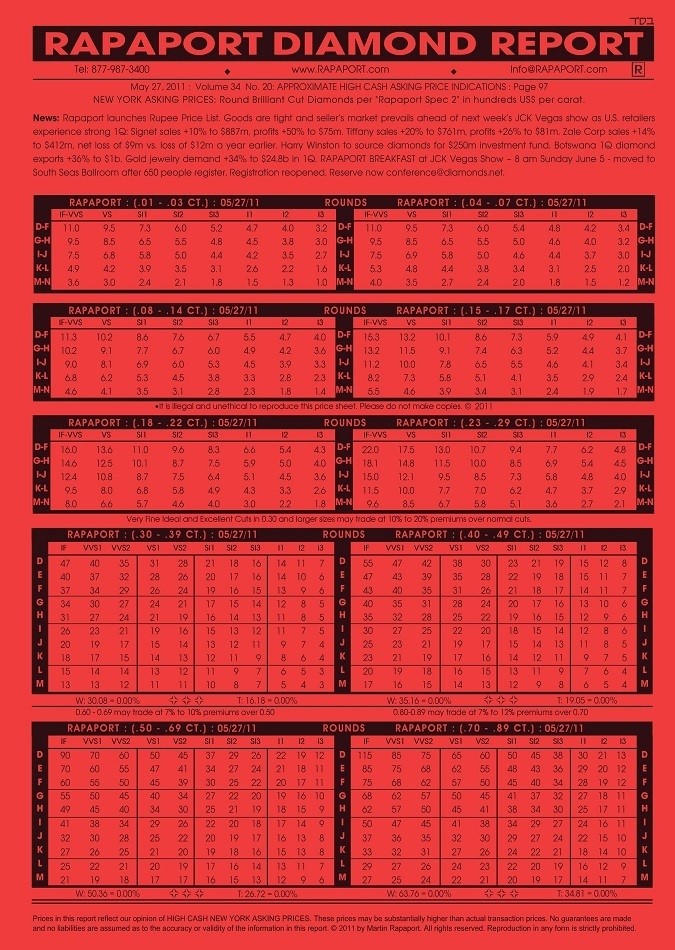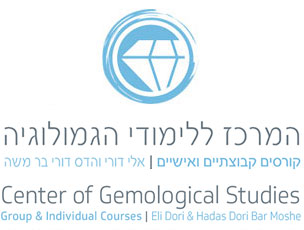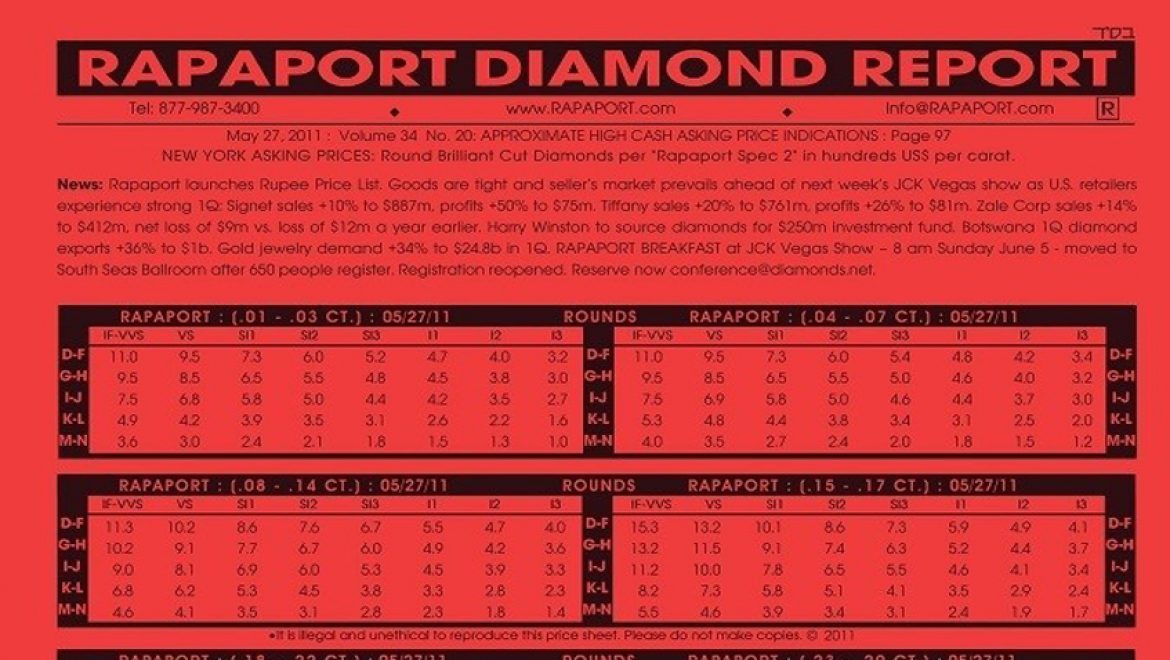Rapaport Diamond Report (RDR) for polished diamonds is named after the Jewish American diamond dealer Martin Rapaport, or by his nickname: “Mr. Bow-Tie”, because he only wears bow-ties.

Rapaport Diamond Report
In 1978 the RDR was first published. This is the most popular and well known report in the world diamond industry. The report is published every Thursday at 23:59 and is divided into 2 reports: Round diamond list and Pear shape list which is valid for all fancy shapes.
RDR for round diamonds is higher than for fancy shapes. When manufacturing a round stone there is a lot of wastage transforming the rough diamond into a round diamond.
The RDR is printed as a table which is divided according to the carat weight from 0.01-10.00 carats. The price is determined by: The carat weight, clarity grade color grade and under the assumption that the stone has an excellent cut.
In every weight group the price is per carat and not per stone. For every pair of numbers you have to add 2 zeros or to multiply by a hundred. The RDR is always in American dollars. If the price of a certain item became more expensive the numbers will be written in bold and with an underscore. If the item is cheaper the numbers will be written in bold and Italic. If there is no change in the price the numbers will be written in the same way.
The RDR is designed to reflect the market situation and to be used as a basis to calculate the price of diamonds in the world market.
In actual fact the prices are determined by market forces and usually the price of the diamonds is much lower that what is written in the RDR. In the event that the diamonds are sold bellow the price stated in the RDR the diamond dealers will often use the saying: “Back”. For example 30% back. In the event that the diamonds were sold at the same price stated in the RDR the dealers will use the saying: “List price or Report price”. In the event that the diamonds are sold above the RDR the dealers will use the saying: “Above the RDR or above the list”.
For diamonds in fancy colors there is no specific price list, they are sold by market forces. The large and rare fancy color diamonds are usually sold in public auctions around the world.

Here is an example for calculating the price of the diamonds based on the RDR from the 25 of October 2019:
Round Stone 0.40ct G SI1 $2100 Per Carat, Total Price: $840
Pear Shape 0.40ct G SI1 $1700 Per Carat, Total Price: $680
Round Stone 2.35ct D IF $40,000 Per Carat, Total Price $94,000
Hear Shape 2.35ct D IF $24,000 Per Carat, Total Price $56,400
Mazal U Bracha”(luck and blessing)
In every deal that is closed in the diamond industry it is common to shake hands and say in Hebrew: “Mazal U Bracha”(luck and blessing). The word luck refers to the brother of the Rambam, David Ben Maymon, who was a gem trader. The word blessing refers to the Rambam, whose personality symbolizes good blessings.
By shaking hands and saying Mazal U Bracha it is as if you have signed a contract and you cannot withdraw. Diamond dealing is based on trust, credibility and good reputation. Most deals are closed by signing a small note and not a long contract.
Mazal U Bracha is a worldwide saying. Almost every diamond dealer, whether you come from China, America, Belguim, India, South Africa will say in Hebrew Mazal U Bracha. The use of this blessing in the diamond industry according to the Jews of Amsterdam started after the Spanish expulsion in 1492.
Martin Rapaport operates the worlds’ largest website for buying and selling diamonds. The name of the website is: Rapnet. In order to use the site you need to subscribe yearly. You can also purchase the application: EZcalc.
Would you like to learn more about diamonds? You can approach the Center of Gemological Studies and register to the most prestige, affluent and respected gemology course in the Israeli Diamond Center.
Hadas Dori Bar Moshe also lectures about diamonds in her lecture: The Secrets of the Diamonds.


